It is with great sadness that G4G notes the death of John Horton Conway (26 December 1937 – 11 April 2020).
Here we have collected some recollections from various members of the G4G Community. If you have any references, memories, or tributes that you would like to share, please email us at support@g4gfoundation.org.
John H Conway [was] one of the most unique mathematicians and human beings who ever lived.
– Colm Mulcahy
This is a huge loss. So, within one year and two days, we have lost all three founders of Combinatorial Game Theory: Conway, Berlekamp, and Guy. I was lucky to have known them all.
Conway is most famous for inventing the Game of Life, but his name is all over many important areas of mathematics.
Conway playing backgammon with Pantazis Constantine Houlis, in 1996, in one of his favorite shirts. As he told it to me he went through three of them, ’til they all dissolved. I have the same Escher shirt, that I bought in Berkeley in the 80s. I save it for special occasions. He was always envious when I would see him at conferences — you can’t get them anymore.
– Bob Hearn
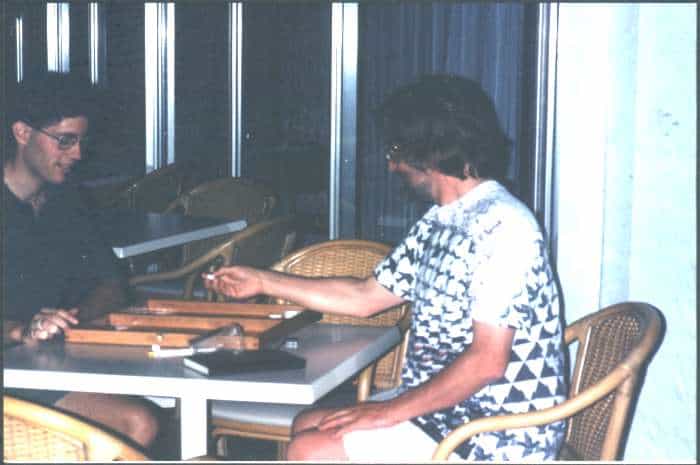
In 1977 I was a fifteen-year-old in Kearney, Nebraska. My father was a professor of English at the local college, Kearney State College. My mother taught English classes there, too. They had a good library, the Calvin T Ryan library (I considered it good because it was far better than the local public library). Anyway, they had a little bookshelf near the front desk that had a label on it that read “New Acquisitions.” I had gotten in the habit of checking it frequently. Sometime in 1977, this New Acquisitions shelf had a book on it that caught my attention: its title was “On Numbers and Games,” its copyright date was 1976, and the author’s name was John Horton Conway. Anyway, I was interested both in numbers and games, so I took it off the shelf, and went to a table to start flipping through it. I was instantly smitten: it was like reading a book that explained that Magic Is Real. I made a decision that I would *never* return this particular book to the Calvin T Ryan library. In fact, I never did; it’s still in my possession, today. Many years later, I met Conway and gave a talk in Banff on how to improve various things in his book; he sat right in front of me when I gave the talk, and energetically interrupted me as I explained various things. Here’s a photo of us together, a few years later, at Thomas M. Rodgers’s house in Atlanta.
[…] this [following] photo of Elwyn Berlekamp, John Horton Conway, and Richard K Guy (all three are in the front row of the audience, from left to right) at the Banff conference on combinatorial game theory in 2005. It’s amazing to me that they’ve now all died in within a 12-month period, give or take a few weeks. I took this photo just after giving the first lecture of the conference, on misere quotients for impartial games.
– Thane Plambeck
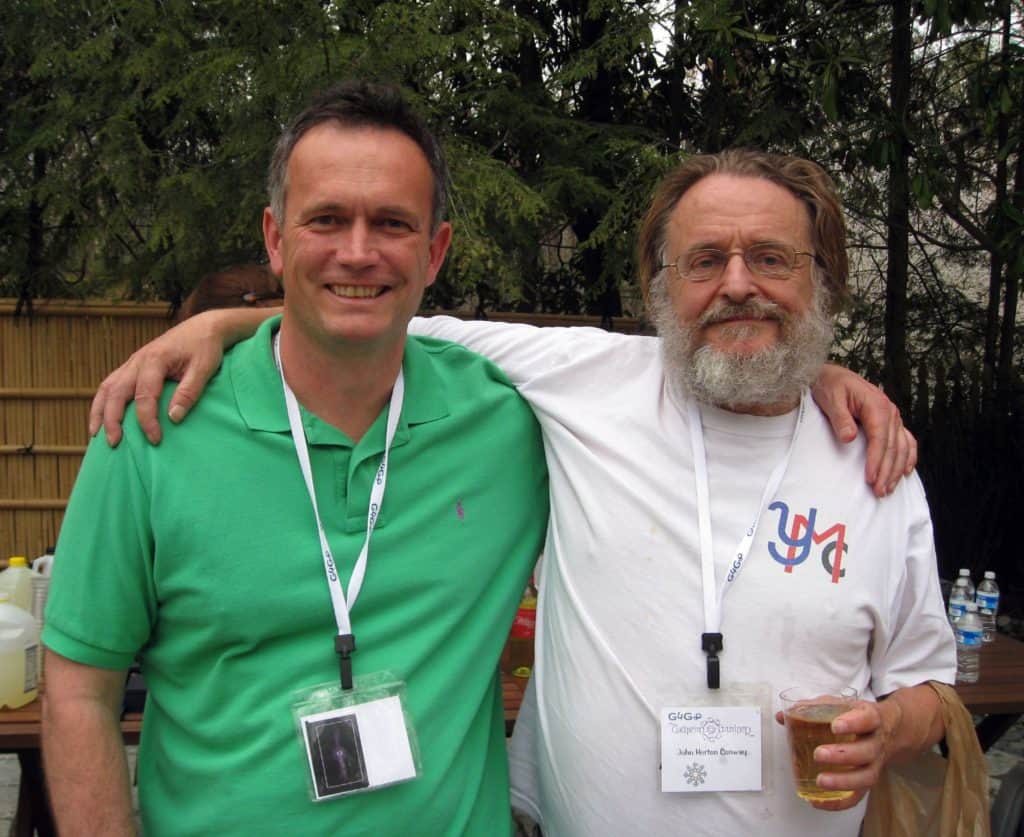
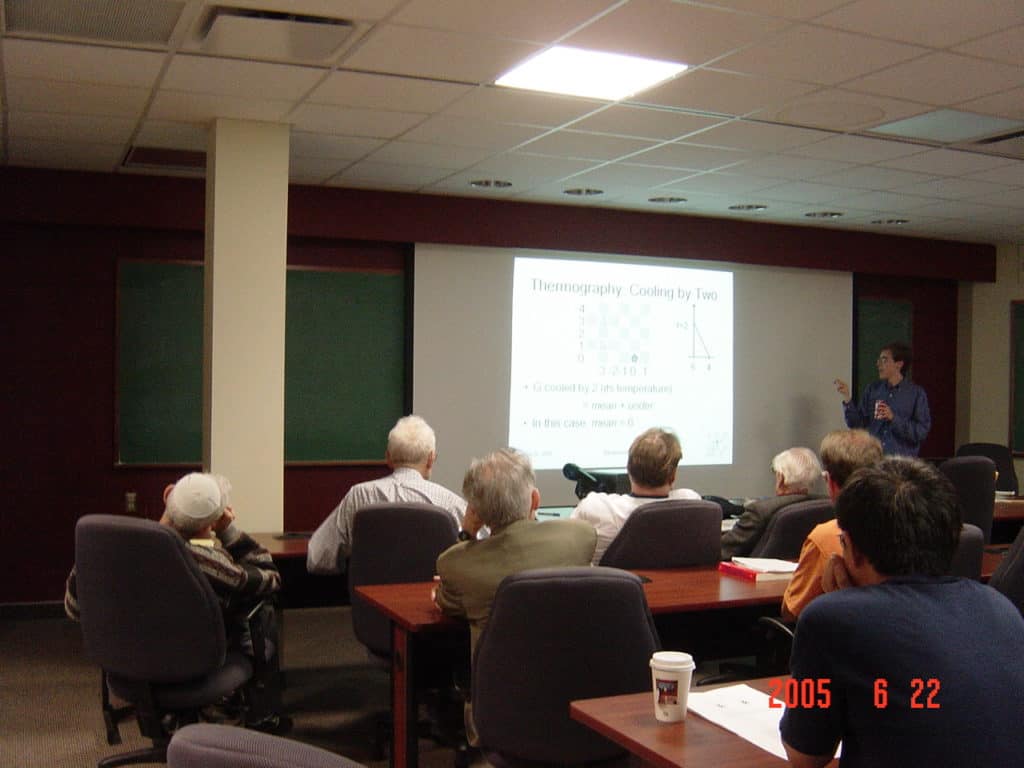
What a marvelous human! He injected math with playful insightful originality that will always inspire me. Anything he touched turned to play.
– Scott Kim
The National Museum of Mathematics mourns the passing of a giant in the world of mathematics, a larger-than-life personality whose intellectual brilliance and irreverent sense of humor endeared him to many.
As an institution, and as a community, we will miss John.
And I, personally, will miss him as a friend, to both the Museum and to me.
May John’s work, life, and memory continue to serve as an inspiration to all.
– Cindy Lawrence
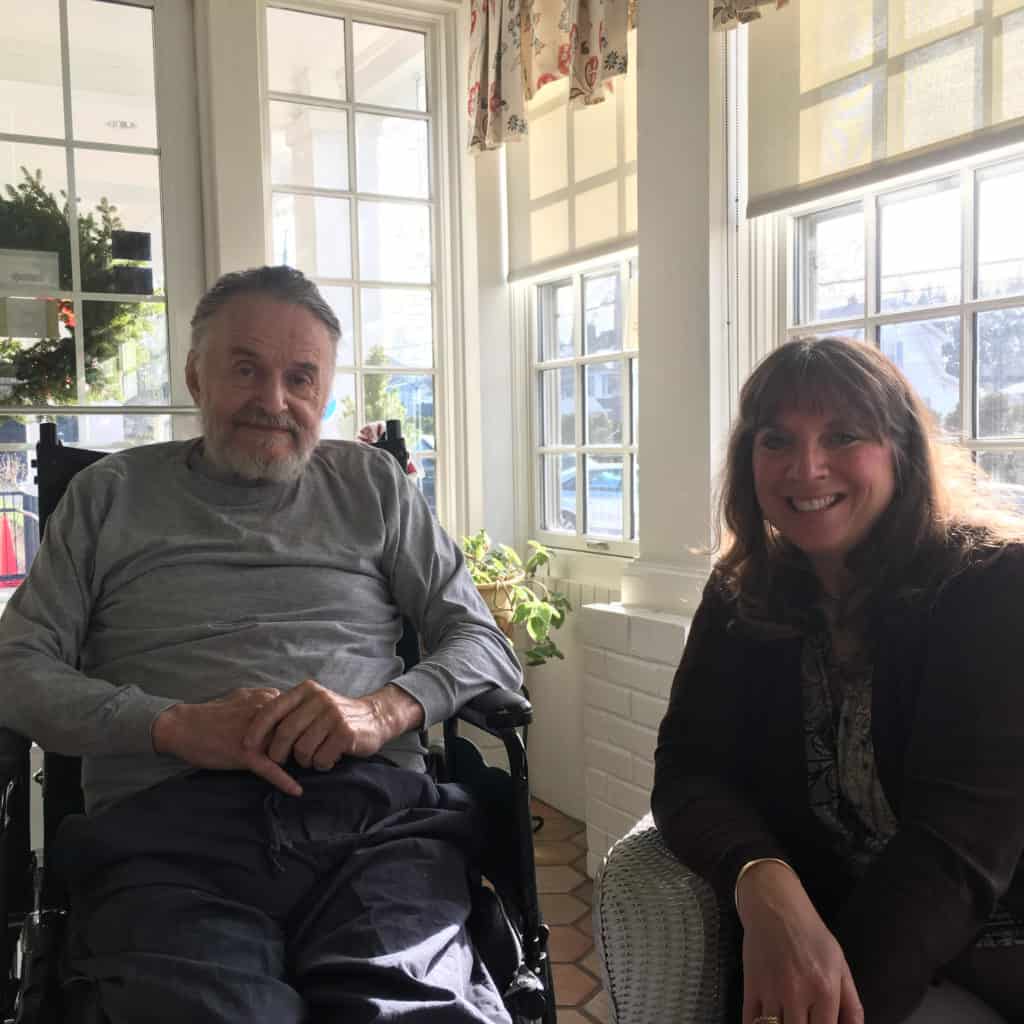


In the Game of Life, being in proximity to too many others doesn’t end well. Just a few days after Richard Guy. I got to meet him many times.
– Ed Pegg
With great sadness I just heard John Conway passed away. A brilliant Mathematician at Princeton. He was most widely known for inventing the computer Game of Life (NOT the board game).
I’ll never forget when I greeted him at another math conference and he greeted me by my name. I have since enjoyed his company at many Gathering 4 Gardner events.
The first time I met him in 2008 he grabbed me to sit on his lap. I was with Bill Ritchie at the time who snapped this quick shot. The second photo was after singing with him and a group “Always Look at the Bright Side of Life” and he said at the end “I Hate Life” (which was funny because for a long time he hated to be known for inventing Game of Life but later in his life he came to appreciate it more).
– Tanya Thompson

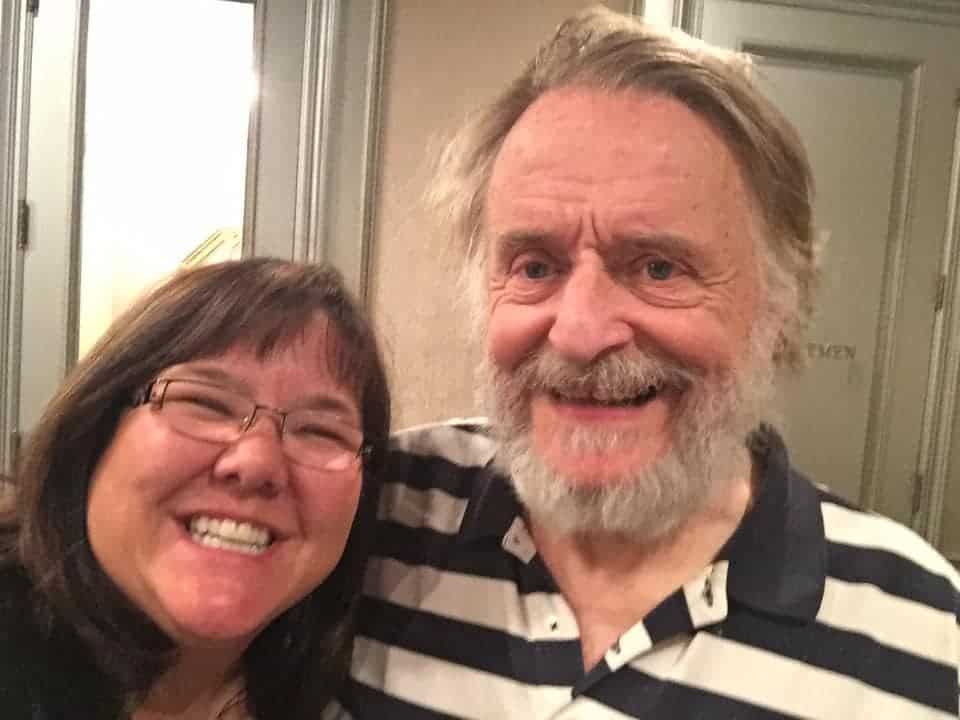

We were lucky to know one of the immortals of the world of mathematics. And he did give us the Game of Life. We are all elements in that game.
In 2014 we talked about some of my games, and I was happy that he accepted a copy of my new StarSlide set to play with his son and maybe explore its mathematical ramifications.
My poetic contribution to the presentations that year (G4G11) was “11 Unexpected Parallels”, the title inspired by Martin Gardner’s “The Unexpected Hanging“. The final verse was dedicated to John Conway. John got a kick out of it.
– Kate Jones

I sent an email to John Conway, expecting no answer or, if I were lucky, a short reply in a couple of weeks. Well, John replied ia a few minutes, explained it to me, and we changed a few more email messages that afternoon.I will never forget this example of humanity, typical maybe of great minds, but a fortunate surprise for me.– Jorge Nuno Silva
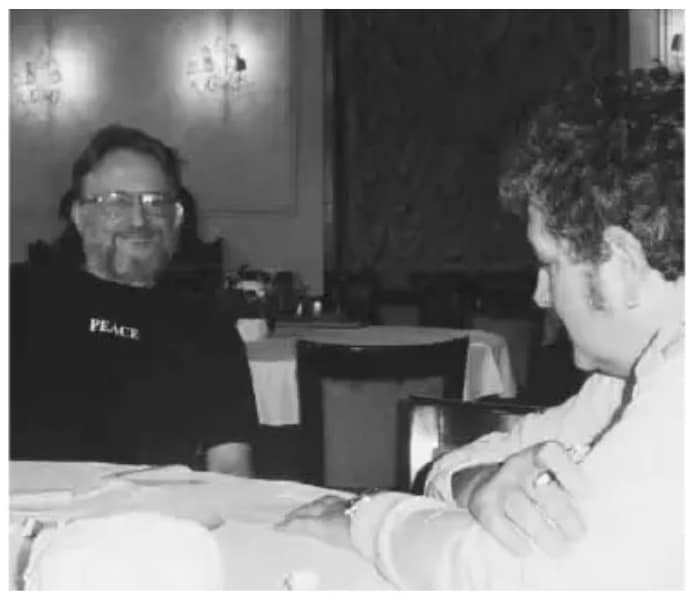
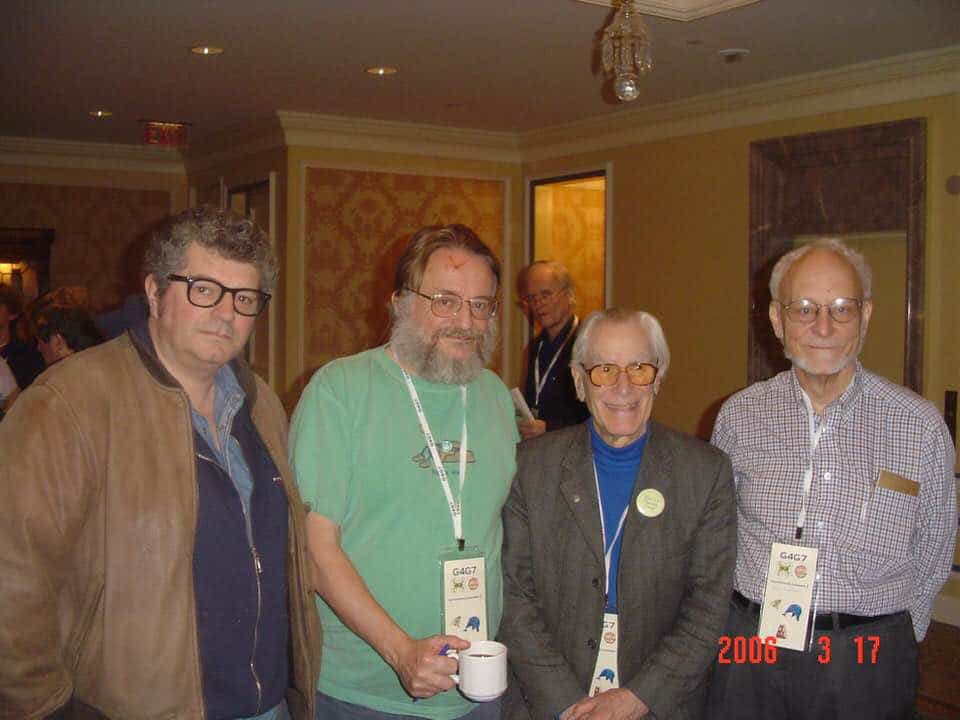
[…] We had many friendly chats while having lunches or dinners at Thomas M. Rodgers home before he also passed. Looking at his Symmetry of Things book over the past week because of work I’m doing for the puzzle company and currently thinking about read Siobhan Robert’s book about him again. […] John considered the surreal numbers his greatest discovery and gift to the mathematical world. He told me that he appreciated that I was more interested in that than asking him about the Game of Life.
– Elijah Allen
Sad news today about the loss of John Conway to COVID-19. He was a giant in the math world and also funny, pleasant, and approachable. He made time for young people who admired him and shared his passion for math, logic, puzzles and more. We spent time with him at both Gathering for Gardner conferences that we attended as well as at the old Princeton Math Circle and sitting in on a class or two there. My condolences to his family. May his memory be a blessing.
– Michelle Morrison Brown
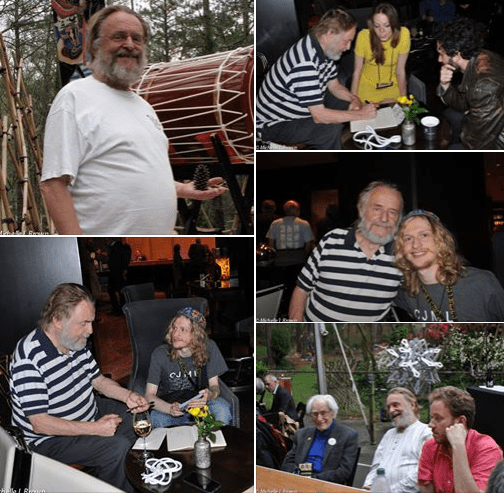
My first encounter with John Horton Conway was in 2001 when he was invited to give a talk at Allegheny College. I had gotten a university van and herded a group of Slippery Rock students to go up to hear the talk. There was a reception beforehand. I saw him and decided to walk over and introduce myself. He was speaking with a few students. Puzzles had been placed on tables throughout the room and he was discussing how one of them was just a topological trick and it’s easy to see how to solve it with a string. As I edged into the group he said, “If we just had some string I could show you.” He proceeded to untie MY shoe, take it, and use it to illustrate his point. Meeting up with him was always interesting.
– Robert Vallin
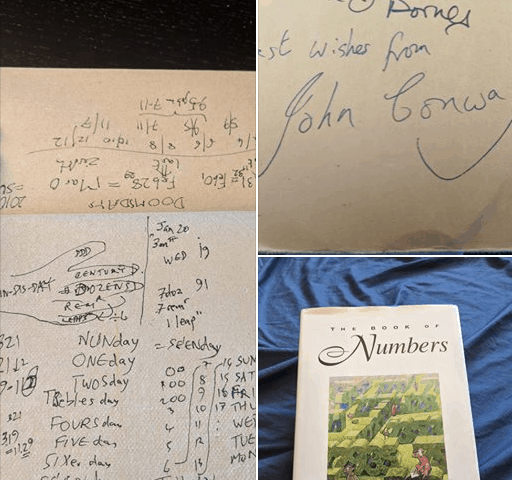
I’m mournful to hear of the passing of John Conway. You may know him for the 2D Game of Life, but he did much more.
He was always my favorite living mathematician, after I read about him in Martin Gardner’s recreational math columns in middle school. I had a chance to meet him a few times, which was really affirming to my interest in math.
Memories of John Conway: a napkin where he taught me his Doomsday algorithm (for calculating the day of the week for any calendar date), “Best wishes from John Conway” with his signature, and one of my favorite math books because of its density of wonderful math nuggets.
– Lucas Garron
Years ago we were both at the Gathering 4 Gardner, a math/magic/puzzle conference. as i walked through the lobby between sessions, i passed a small group where Conway was holding court. i stopped to listen in just as he was saying “…so who here has a six sided die? anyone? anyone?”. the group looked at each other and shrugged. I happen to always keep one on me (from binions, natch), so i pulled it out of my jeans’ watch pocket and handed it to him. “yes, thank you!” he said taking it, and for the briefest moment he gave me that quizzical look, as if saying “do you always carry one of these around?”.

He then held the die with his thumb and fingers covering opposite faces. the 1 pip face was visible facing up, and the 2 pip face was visible facing away from his palm. “so you see”, he said, “the one face is showing, and opposite of it is the six” (twisting his wrist to show everyone). “and the two face is showing, which is opposite the…” (he paused). “five” everyone replied. “good, my thumb and fingers are covering the three and four faces… here’s the question… what face is under my thumb? the three or the four?”
No one had any idea. i wondered if there was actually some standard or whether it was random. after a few moments of silence, Conway revealed the answer: “under my thumb is the three. because all six sided dice follow the ‘counting/counter’ rule. if you look at the corner of the die adjacent to the one/two/three faces, you’ll see that the numbers are arranged around this corner in a counter-clockwise direction. you can always remember this by noting that the ‘counting’ numbers go counter-clockwise. one/two/three and four/five/six both go counter-clockwise around their corners”. everyone was impressed. and Conway handed me back my die with a slight bow of his head. “thank you for that” he said.
For me this was perfect Conway. an piece of arcana at the border of numerics and culture, for which he had coined a mnemonic term that i still remember to this day. and personally, i’ll always treasure those seconds when he took my die and looked at me askance. i felt at that moment that we were at the same level of weirdness, and being weird like John Conway is maybe the highest calling i can imagine.
– Bruce Oberg
Sad to hear that John Horton Conway has died, apparently from COVID-19 related complications. I didn’t know him well, but I met him several times and he never failed to make a strong impression.
I remember one time I was giving a colloquium talk at Princeton and had a couple of hours to kill before my lecture… John Conway and I ended up chatting for two hours in the math department common room about the pros and cons of different methods for mentally calculating the day of the week for any given date (Conway, of course, argued forcefully for his own Doomsday Method).
Another time we interacted was at one of the Gatherings for Gardner. I showed him Simon Aronson’s amazing card trick “Prior Commitment” and he demanded that I explain how it worked. Normally I would politely refuse, but for John Conway I of course made an exception.
His mathematical work was incredibly creative and singularly original. I loved reading “The Sensual Quadratic Form” and “The Book of Numbers”, and Donald Knuth’s “Surreal Numbers” is a delightful account of one of Conway’s many strange but profound inventions.
My student Farbod Shokrieh and I tried many years ago to develop a polynomial-time algorithm to solve the graph isomorphism problem. Although our effort was ultimately unsuccessful, the partial progress we made (ultimately made irrelevant by the work of Babai) was heavily influenced by Conway and Sloane’s book on Sphere Packings, Lattices, and Groups.
– Matt Baker
Conway’s work on games and on tilings had a big influence on me, but even more influential was his way of working-by-playing. John was a walking existence proof of the proposition that one can have a successful career in math by following one’s curiosity and seeing where it leads, without worrying about being “serious”.
– James Propp
Other Relevant Links:
The Guardian – John Horton Conway obituary
– by Colm Mulcahy
The New York Times – John Horton Conway, a ‘Magical Genius’ in Math, Dies at 82
– by Siobhan Roberts
The New York Times – Travels With John Conway, in 258 Septillion Dimensions
– by Siobhan Roberts
Shtetl-Optimized Blog – John Horton Conway (1937-2020)
– by Scott Aaronson
Matt Baker’s Math Blog – Some Mathematical Gems from John Conway
– by Matt Baker
solipsys.co – Remembering Conway
– By Colin Wright
I Programmer – John Conway Dies From Coronavirus
– by Sue Gee
xkcd – RIP John Conway, Tribute Animation
Numberphile Podcast – The Legendary John Conway (1937-2020)
Hackaday – John Horton Conway, Creator of Conway’s Game of Life, Has Died
– Mike Szczys

At one of the Gatherings, I waited on a line to ask Conway a question about prime numbers and digital roots, something I was obsessed with at the time. He answered my simple question and then, sensing my interest, told me about prime races, ignoring the G4Ger next in line who was practically jumping up and down with impatience. Now, even in death, he inspires, since Jorge Nuno Silva’s memory contains an article that I want to read. His passing is a great loss to mathematics and the G4G.